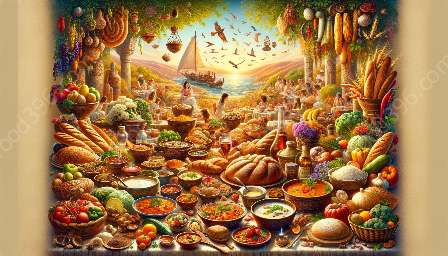If you're a food enthusiast who loves to explore new flavors and cultures, then Eastern European cuisine is a treasure trove waiting to be discovered.
Introduction to Eastern European Cuisine
Eastern European cuisine is a fascinating blend of diverse traditions, reflecting the region's rich and complex history. It encompasses the culinary heritage of countries such as Russia, Poland, Hungary, Romania, Czech Republic, Slovakia, Ukraine, and many more. The cuisine is characterized by its hearty and wholesome dishes, often influenced by the bountiful agricultural resources of the region.
Regional Cuisine: Diversity and Commonalities
Each Eastern European country boasts its unique culinary customs and flavors, but there are also common threads that connect the region's food culture. The use of hearty root vegetables, grains, and dairy products is prevalent, and dishes often feature robust flavors from a variety of spices and herbs.
Traditional Eastern European Dishes
1. Pierogi
Pierogi, known as the quintessential Eastern European dumpling, comes in various savory and sweet fillings. These delightful pockets of dough are filled with ingredients such as potatoes, cheese, cabbage, meat, or fruit, and are often boiled or fried.
2. Borscht
Borscht is a vibrant and hearty beet soup that holds a special place in Eastern European culinary tradition. It can be served hot or cold and is often accompanied by sour cream and fresh dill.
3. Goulash
Goulash, a Hungarian stew, is a beloved comfort food made with tender chunks of meat (usually beef), onions, peppers, and an array of spices. It's typically served with a side of noodles, potatoes, or bread.
4. Cabbage Rolls (Golubtsi)
Cabbage rolls, known as golubtsi in Russian cuisine, are tender leaves of cabbage stuffed with a savory filling, usually a mixture of ground meat and rice, simmered in a flavorful tomato sauce.
Food Culture and History: Influences and Traditions
Eastern European cuisine has been shaped by a myriad of influences, from the nomadic tribes and indigenous peoples of ancient times to the various conquerors and rulers who left their mark on the region. The cuisine also reflects the agricultural practices and seasonal eating habits that have been passed down through generations.
The rich history of Eastern Europe is intricately woven into its culinary tapestry, with each dish telling a story of resilience, resourcefulness, and the celebration of life. Gathering around the table for festive meals and observing time-honored rituals are integral parts of the region's food culture.
Modern Interpretations and Global Influence
While traditional recipes remain cherished, Eastern European cuisine has also evolved to embrace modern culinary trends and international influences. Chefs and home cooks are reinventing classic dishes with innovative twists, and Eastern European restaurants around the world are introducing global audiences to the region's delectable flavors.
In conclusion, Eastern European cuisine invites you on a sensory journey that celebrates the region's culinary diversity, cultural heritage, and enduring traditions. Whether you're savoring a steaming bowl of borscht or indulging in the comfort of pierogi, each bite offers a taste of Eastern Europe's storied past and vibrant present. Unlock the flavors and stories of Eastern European cuisine as you savor the authentic tastes of this remarkable region.

